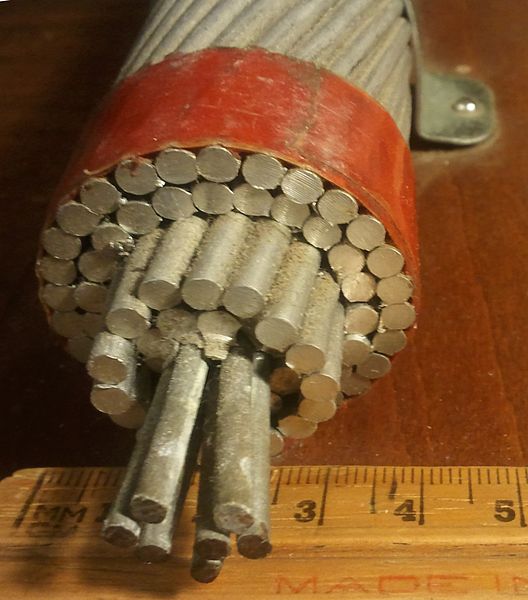You can look at stranded wire as being parallel paths for the current to flow
They're
not isolated. It's all the same conductor, but with holes in it.
stranded wire is better for AC currents.
Once again, DOESN'T APPLY in 60Hz applications listed in this thread. No one is putting 4MHz through an extension cord. And stranding the wire doesn't do shit anyway, because the strands aren't isolated. You clearly haven't even read the wikipedia links.
You refuse to read my links, but I've read yours. Not only is that one point wrong, you've misunderstood the rest of the article completely.
You're using this link as a drunk man uses a lamp post. For support rather than illumination. Note your link here is ONE article by ONE author, Laura Hughes, who is the "Manager of Application Marketing " Compare that with the thousands of authors on wikipedia. But that sounds like Paul. Listen to one voice (his own) and ignore the rest of the world (except laura, who probably just misspoke).
Power lines are an entirely different animal. They look tiny when they're dozens of feet in the air, but I assure you they're not. Since you won't follow links, I'll hotlink a photo so you don't have a choice.
Yes, even here the skin effect begins to be a problem. But only slightly, as the center conductors are often made of steel, which serve as support for the cable rather than carry the current. Again, stranding the conductor does not isolate the strands.
But let's critically examine her passage "This is why stranded wire is so common in AC applications, even for relatively low frequency applications like power lines ". Is it though? Tell me Paul, how many strands are in the 14awg wire running in your house walls? What about the 12awg? What about the 10awg that has enough power to run a clothes dryer? NO?? Still one strand? How can it be? Is it even possible to find stranded house wiring, since it's SO MUCH BETTER? I doubt it. Maybe you think the regulatory agencies like NEMA, IEC, IEEE, UL, CSA, had nothing to say about the NEC being constructed without stranded wire as a residential wiring standard because they don't care about electrical efficiencies or electrical safety of houses? Can Paul really think these companies that stupid? Clearly Paul knows better. It can't be as simple as "flexibility doesn't matter as much when the wire... never moves", can it Paul?
Only at 8awg does most household wiring become stranded. But I guess there's no way you would know this, since you're clearly so shit with electrics, but bending 8awg solid wire through and around electrical boxes and in tight spaces is a bit of a pain in the ass. Stranding helps with this greatly, but AGAIN it does fuck-all for the skin effect. AGAIN, skin depth is way deeper than the conductor.
Even your favorite author, Laura, had this to say in her passage that YOU linked, "At 60Hz in copper wire, the skin depth is 8.5mm. " That's WAY bigger than any extension cord conductor. It just doesn't apply here. Has the repetition helped? I somehow doubt it.
Is it possible you didn't even read your OWN link?
Yesterday my daughter and her family came by to visit me... Certainly don't need these kinds of confrontations.
Poor, poor Paul. Losing an argument so bad he's trying the pity route.
I'm not going to get into this again.
HA. Okay. So! Taking bets. Here's where we find out if Paul is lying.

Does he come back with an even thicker skull?
I already know everything brought up
Fixed that for you







